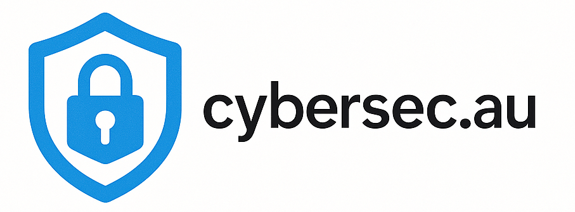While often used interchangeably, cybersecurity and IT security have distinct meanings and scopes. Understanding these differences is crucial for Australian business leaders making informed decisions about their organization's security strategy and resource allocation.
🔍 Quick Comparison
IT Security
Protects information systems, data, and technology infrastructure from unauthorized access and threats.
Cybersecurity
Broader protection against digital attacks, including networks, devices, programs, and data in cyberspace.
What is IT Security?
IT Security, also known as Information Security or InfoSec, focuses on protecting an organization's information systems and data from unauthorized access, use, disclosure, disruption, modification, or destruction.
Core Components of IT Security
- Data Protection: Safeguarding sensitive information and databases
- Access Control: Managing user permissions and authentication
- Network Security: Protecting internal network infrastructure
- Physical Security: Securing hardware and facilities
- Compliance: Meeting regulatory and industry standards
IT Security Focus Areas
- Confidentiality: Ensuring information is accessible only to authorized users
- Integrity: Maintaining accuracy and completeness of data
- Availability: Ensuring systems and data are accessible when needed
- Authentication: Verifying user and system identities
- Authorization: Controlling access to resources and functions
What is Cybersecurity?
Cybersecurity is a broader discipline that encompasses protecting digital assets, networks, devices, and data from cyber attacks, damage, or unauthorized access in the digital realm.
Core Components of Cybersecurity
- Network Security: Protecting network infrastructure and communications
- Application Security: Securing software applications and development
- Endpoint Security: Protecting devices that connect to networks
- Cloud Security: Securing cloud-based systems and data
- Identity Management: Managing digital identities and access
- Incident Response: Responding to and recovering from cyber attacks
Cybersecurity Threat Landscape
- Ransomware attacks: Malicious encryption of data for extortion
- Phishing campaigns: Social engineering to steal credentials
- Advanced Persistent Threats (APTs): Long-term targeted attacks
- Zero-day exploits: Attacks using unknown vulnerabilities
- Insider threats: Malicious or negligent internal actors
Key Differences Explained
Scope and Coverage
IT Security Scope
- Internal systems and infrastructure
- Data protection and privacy
- Access control and user management
- Compliance and governance
- Physical security measures
Cybersecurity Scope
- Digital threats and cyber attacks
- Internet-facing systems and services
- Threat intelligence and monitoring
- Incident response and recovery
- Cyber risk management
Threat Focus
IT Security traditionally focuses on:
- Unauthorized access to systems
- Data breaches and information theft
- System failures and downtime
- Compliance violations
- Internal security policy breaches
Cybersecurity addresses:
- Sophisticated cyber attacks and malware
- Nation-state and organized crime threats
- Advanced persistent threats (APTs)
- Social engineering and phishing
- Emerging digital threats and vulnerabilities
Approach and Methodology
IT Security Approach:
- Risk-based security controls
- Compliance-driven implementations
- Preventive security measures
- Policy and procedure enforcement
- Audit and assessment focus
Cybersecurity Approach:
- Threat-centric defense strategies
- Continuous monitoring and detection
- Rapid response and recovery
- Threat hunting and intelligence
- Adaptive security measures
Why Both Matter for Australian Businesses
Complementary Protection
IT Security and Cybersecurity work together to provide comprehensive protection:
- Foundation: IT Security provides the foundational controls
- Defense: Cybersecurity adds dynamic threat protection
- Compliance: Both ensure regulatory compliance
- Business continuity: Together they maintain operations
Australian Regulatory Context
Australian businesses must consider both perspectives:
- Privacy Act 1988: Requires IT Security controls for personal information
- Essential Eight: Cybersecurity framework for government contractors
- Notifiable Data Breaches: Requires both IT Security and Cybersecurity measures
- Critical Infrastructure: Mandates comprehensive cyber resilience
Implementation Strategies
Integrated Security Approach
Modern organizations benefit from integrating both disciplines:
- Unified governance: Single security framework covering both areas
- Shared resources: Cross-functional security teams
- Common tools: Platforms addressing both IT and cyber security
- Coordinated response: Integrated incident management
Technology Convergence
Modern security solutions often combine both approaches:
- SIEM platforms: Monitor both IT systems and cyber threats
- EDR solutions: Protect endpoints from internal and external threats
- Zero Trust architecture: Integrates access control with threat protection
- Cloud security: Addresses both IT infrastructure and cyber risks
Choosing the Right Focus
For Small Businesses
Start with IT Security fundamentals, then add Cybersecurity capabilities:
- Basic IT Security: Access controls, data protection, backups
- Essential Cybersecurity: Antivirus, firewalls, email security
- Advanced Protection: Multi-factor authentication, monitoring
- Managed Services: Partner with cybersecurity MSPs
For Medium to Large Businesses
Implement comprehensive programs covering both areas:
- Governance: Unified security governance and risk management
- Technology: Integrated security platforms and tools
- People: Cross-trained security professionals
- Processes: Coordinated policies and procedures
Career Implications
IT Security Professionals
Focus on foundational security disciplines:
- Skills: Risk management, compliance, access control
- Certifications: CISSP, CISA, CISM
- Roles: Security analyst, compliance officer, risk manager
Cybersecurity Professionals
Specialize in threat-focused security:
- Skills: Threat analysis, incident response, forensics
- Certifications: CEH, GCIH, CISSP
- Roles: SOC analyst, threat hunter, incident responder
Future Trends
Convergence and Integration
The future points toward greater integration:
- Unified platforms: Single solutions addressing both areas
- AI and automation: Intelligent security across all domains
- Cloud-native security: Born-in-the-cloud security approaches
- DevSecOps: Security integrated into development processes
Emerging Challenges
New challenges require both IT Security and Cybersecurity expertise:
- IoT security: Protecting connected devices and systems
- AI security: Securing artificial intelligence systems
- Quantum computing: Preparing for post-quantum cryptography
- Remote work: Securing distributed workforces
Get Comprehensive Security Protection
Whether you need IT Security, Cybersecurity, or both, partner with Australia's leading security specialists for comprehensive protection tailored to your business needs.
Get Free Security Scan